Introduction
"The Adventures of Josie True" is a 2D flash game developed in partnership with the National Science Foundation, Program for Gender Equity. It features fourteen mini games designed to get girls involved in using the internet for science, math, and technology education. The user plays as Josie True, a Chinese-American girl who travels through time looking for her missing teacher, Ms. Trombone.
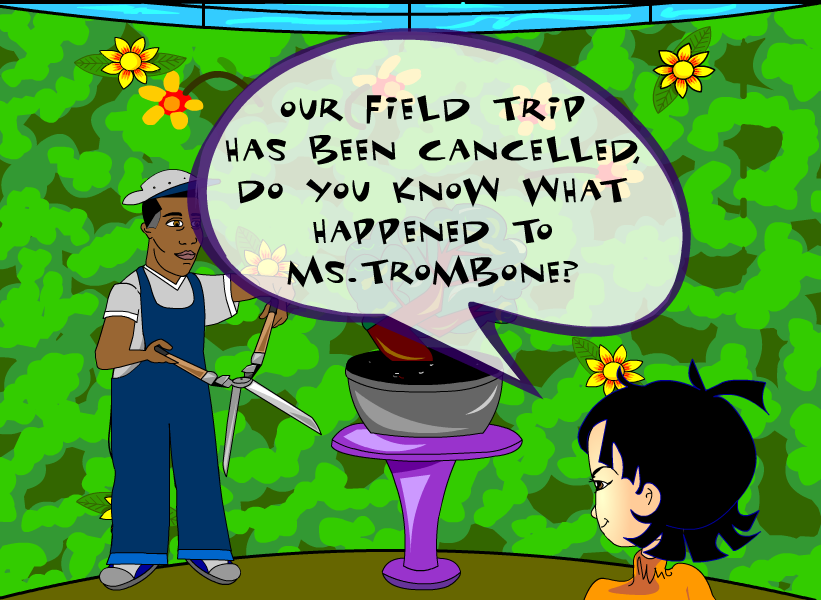
Below is a detailed analysis of this game roughly following Brian Winn's1 Design/Play/Experience framework, including:
Learning
"The Adventures of Josie True" is a mini-game based flash application intended for young girls ages 9 to 11. This online adventure emphasizes the importance of
math, science, and technology by providing a fun and interactive storyline full of informative mini games. Though not a main focus, the game also empowers young girls
by informing them about great women in history and their accomplishments, such as Bessie Coleman, the first female pilot. Subject matter includes:
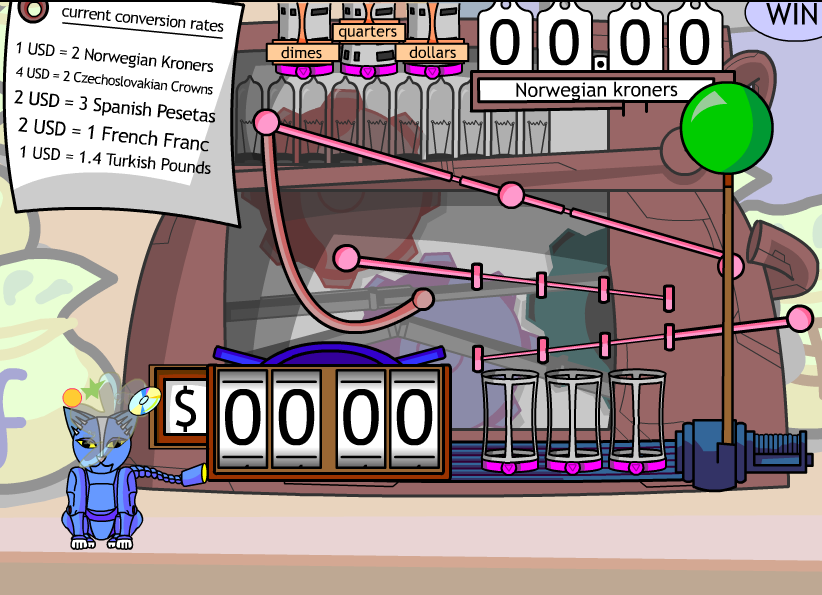
After playing "The Adventures of Josie True," the user should be able to transfer skills acquired in the game to real life in the classroom. This is a STEM game (science, technology, engineering, and mathematics) intended to be a supplement to regular schooling.
Storytelling
In "The Adventures of Josie True," you play as Josie, a young girl looking for her inventor-turned-teacher, Ms. Trombone. You go to Ms. Trombone's house and discover one of her inventions, the Intellicat, with which you travel through time and space, first going to 1920s Chicago then Paris. Following clues left behind by Ms. Trombone, you eventually end up stopping artifact theives, help Bessie Coleman at her airshow, and find Ms. Trombone. Throughout the game, there are frequent cut scenes that explain what is going on and introduces characters such as Bessie Coleman and the art thieves. After each cut scene and mini game, Josie writes in her diary. The diary gives supplemental background information about characters and reiterates what Josie has learned. By providing different locations in the game, there is an abundancy of things Josie can learn. This also helps to keep the player entertained and continue on with the story instead of staying in one location.
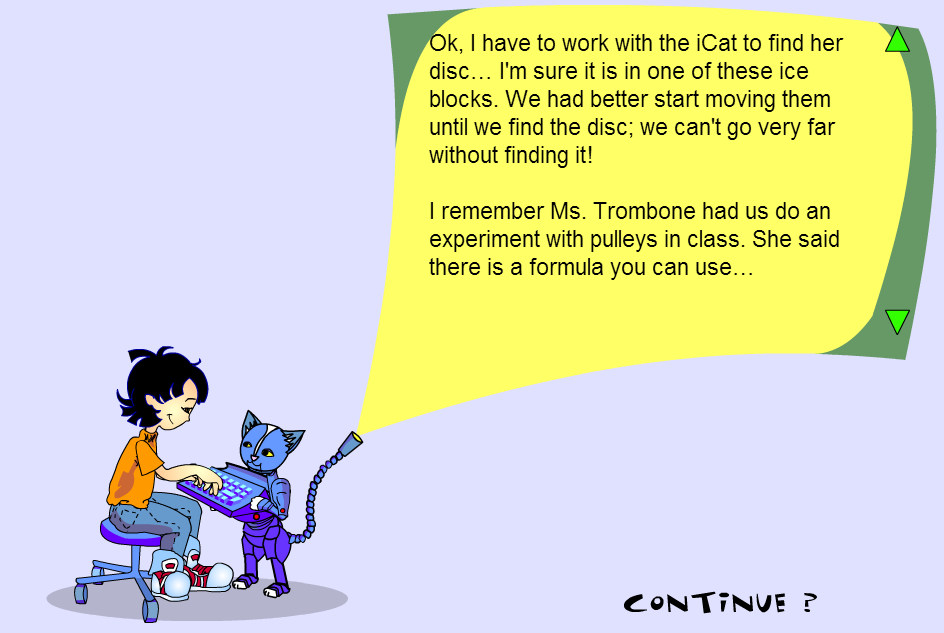
Gameplay
The gameplay in "The Adventures of Josie True" mostly involves completing mini games that add to the overall story. There are fourteen mini games; each game focuses on a different subject and can be played on 3 difficulty settings. The game makes use of coaching, discriminization, and generalization, anything to help the player complete the specific mini game in mind. The mini games in general are exercise models, a typical teaching style that focuses on repetition and procedures. Unfortunately, "The Adventures of Josie True" does not have much variety in game play. The player must complete each mini game in a certain area to move on in the story. Though this is an effective way to make sure the player learns each topic, the user can easily press the "win" button and avoid skipping the game altogether. The game is well balanced between storyline/cut scenes and mini games as long as the player actually completes the games.
User Experience
In The Adventures of Josie True, players click on the mouse and drag it in a direction to move Josie. Intellicat is the main user interface. Buttons are recognizable and basic, being clearly labelled. Music, while enjoyable at first, continues endlessly on and unfortunately, there is no way to stop it/lower the volume.
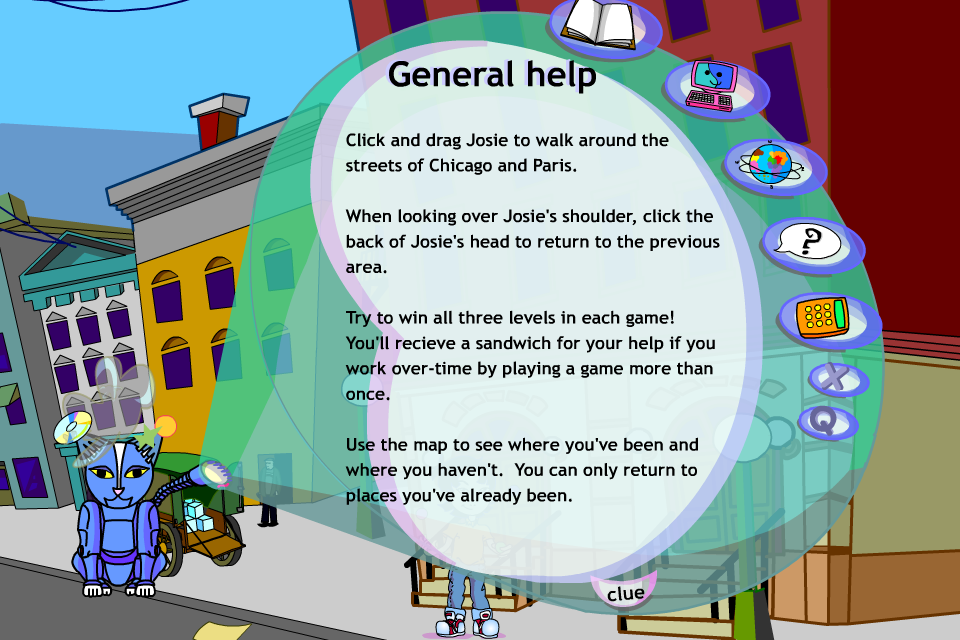
Intellicat is your guide within the game. Although it does not tell you specific goal at the moment, Intellicat's map provides you with a general outline of what to do. For each mini game, you can click on Intellicat for help and it will tell you how to play the game. On the other hand, when playing the mini games, instructions aren't always clearly explained.
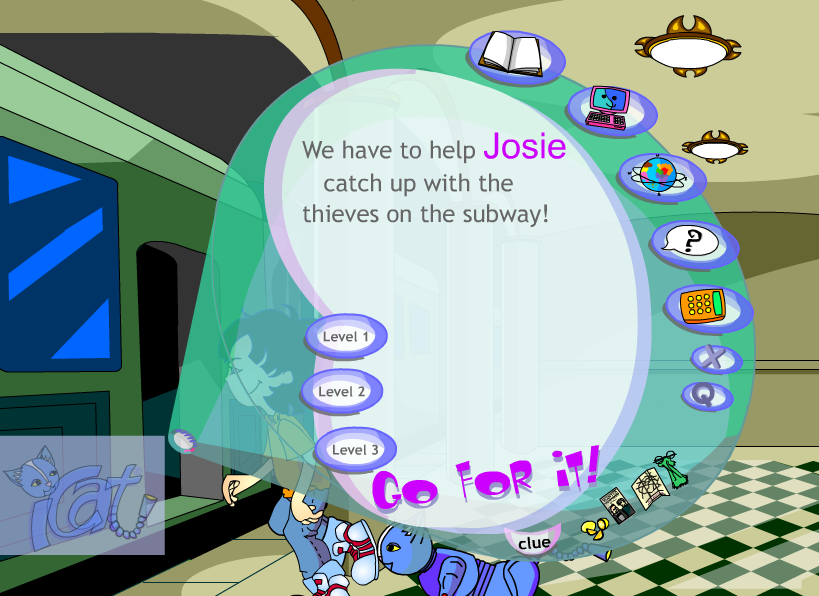
For example, here is the subway game. Normally, this is where iCat would give instructions, but in this instance, it doesn't. One might skip over this game because they don't understand what to do. This intereferes with learning because the player will not want to play the mini game.
Technology
The software technology used to implement the game was a vector-based animation package called Macromedia Flash (primarily version 4 with the flash 5 player accesible). Flash manipulates vector and raster graphics to provide animation of text, drawings, and still images and can support audio and video streaming. It can capture user input via mouse and keyboard, the two main controls "The Adventures of Josie True" uses. Flash Player is ideal for web-based delivery of games and animation mainly because it is easily accessible on almost any browser (with the right plug in) and is available free of charge. This platform is a good choice to implement "The Adventures of Josie True" because there is nothing too overly complicated that needs to go into the game. One problem with using Flash is the lower quality animation. The player may become confused as when to click to move forward during the cut scenes with multiple shots. This could easily be fixed with a "continue on" button that could quickly be added with Flash.
Assessment
In my research, I have not found any formal assessments of this game. One way this game could be assessed would be with pre and post tests. I would test the players' knowledge of the subjects found in the game, providing similar examples to the ones given, then give the user another test after game play. This game is hard to assess, though, because it focuses on subjects already taught in school. Players would have to refrain from attending school during testing to get results that were even somewhat conclusive. Even then, nothing is guaranteed. A downside to testing with exams/quizes would be the stress of a schooling environment, which may skew results. Many of the skills the game teaches are generalization and demonstration, implemented by the exercise model. This link provides articles about Josie and educational gaming for girls.
Conclusion
I would probably give this game a 2/4 rating. The game has good intentions but too many flaws. The main flaw is being able to skip the mini games without even trying them out. Some games were very difficult to understand and not even worth the trouble. One way to fix this could be adding a "hint button" the player could click on when stuck and having iCat explain what you are doing specifically wrong/make suggestions. Another annoyance was the music. The jazz music, though perfect for the 1920s era, became very repetitive and I had a hard time concentrating on the game. A plus side of the game was the mini history lessons given through Josie's diary entries and interactions.
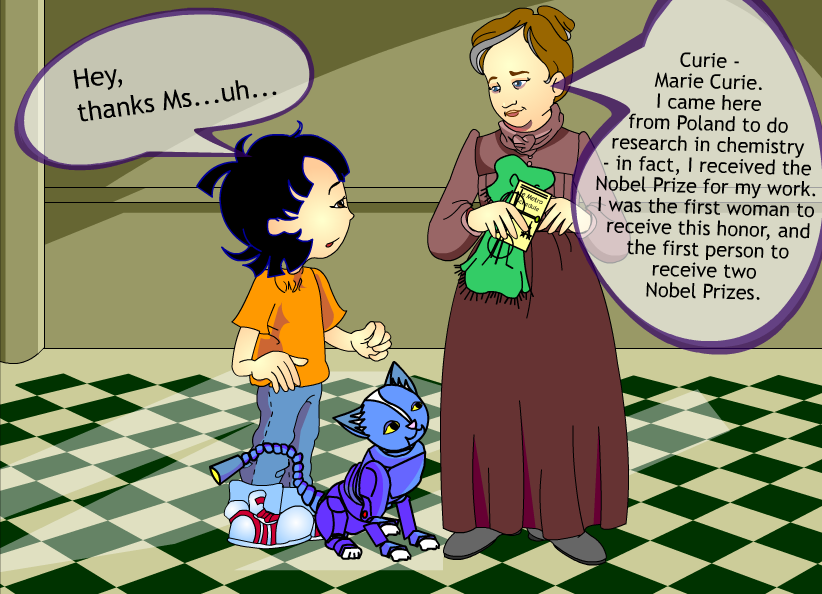
Though teaching history wasn't the main goal of this game, it still came across well. Learning about figures such as Marie Curie and Bessie Coleman give girls feelings of empowerment by showing their importance in history.
Overall, if the user doesn't discover the fact they can click through the mini games and put their volume on mute, the mini games do provide useful information in an enjoyable way suited for 9 year old girls.
